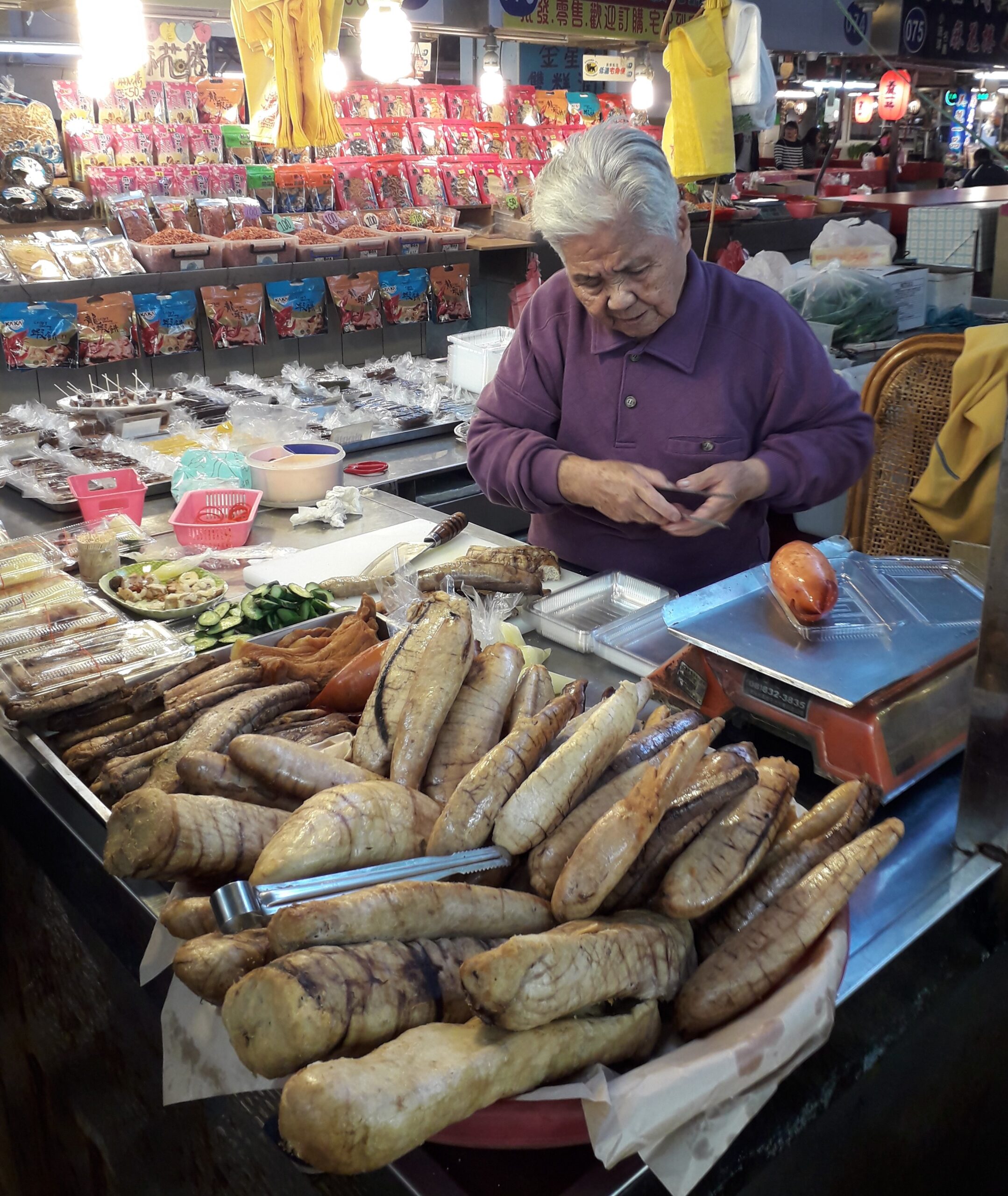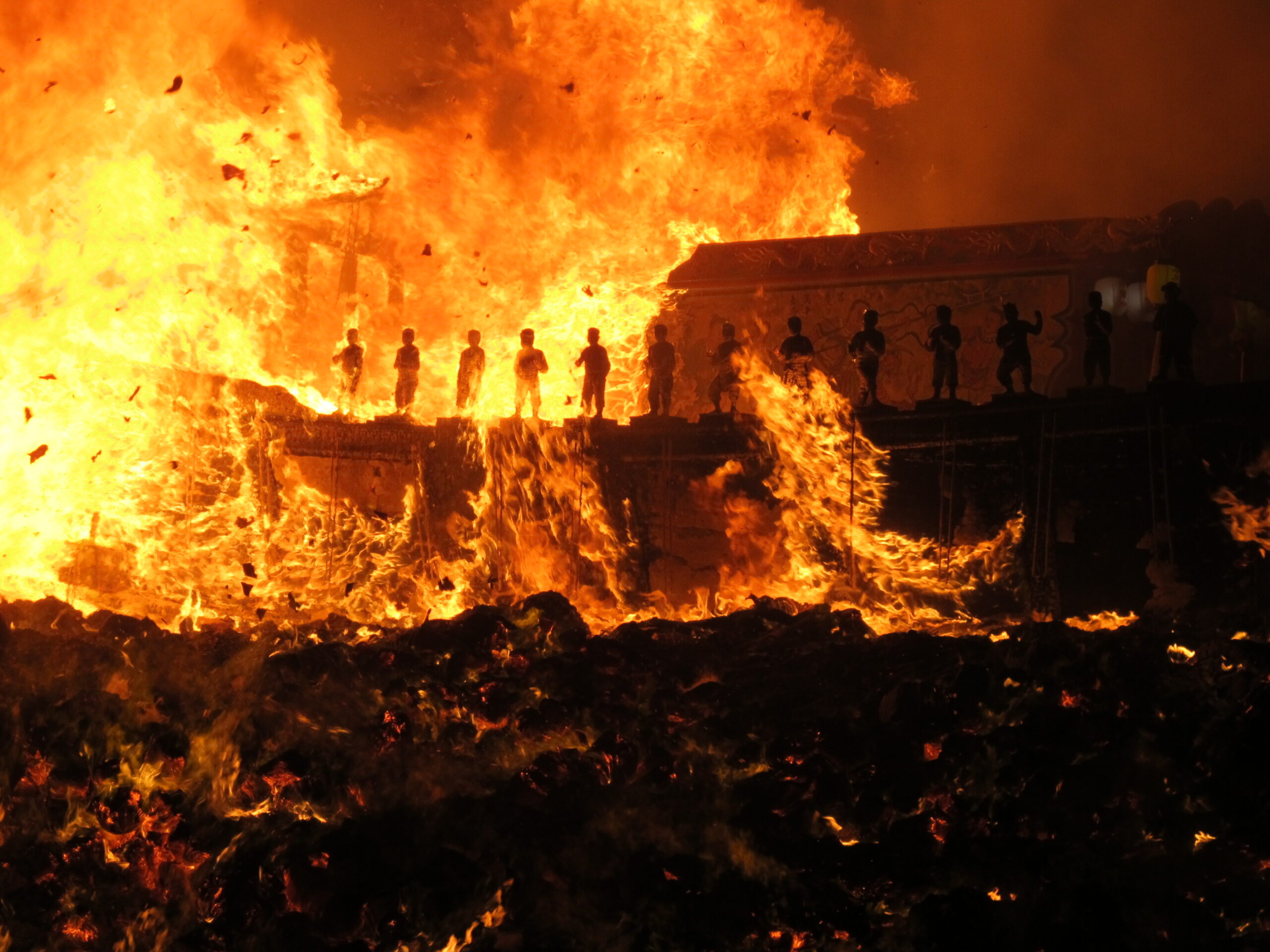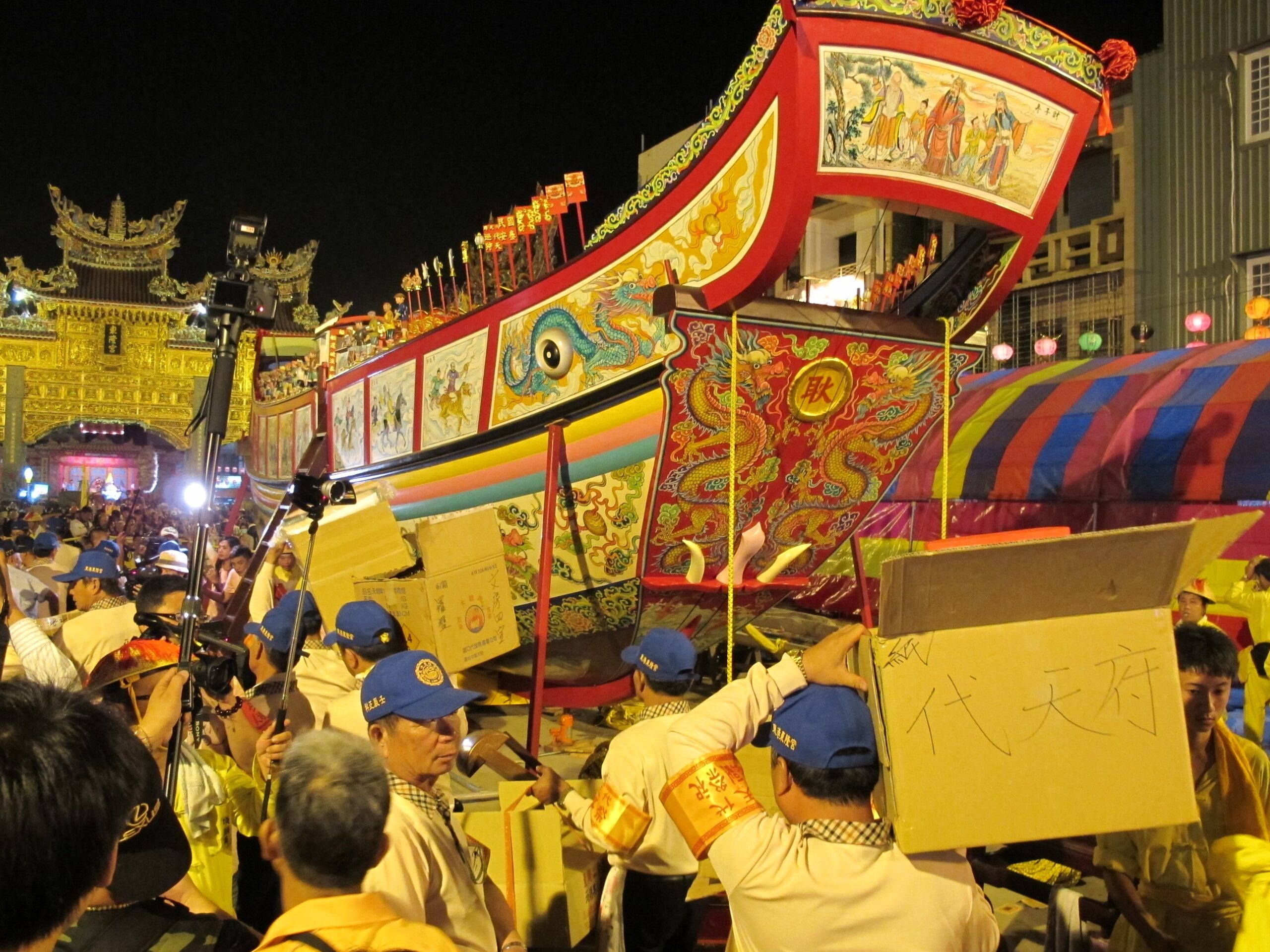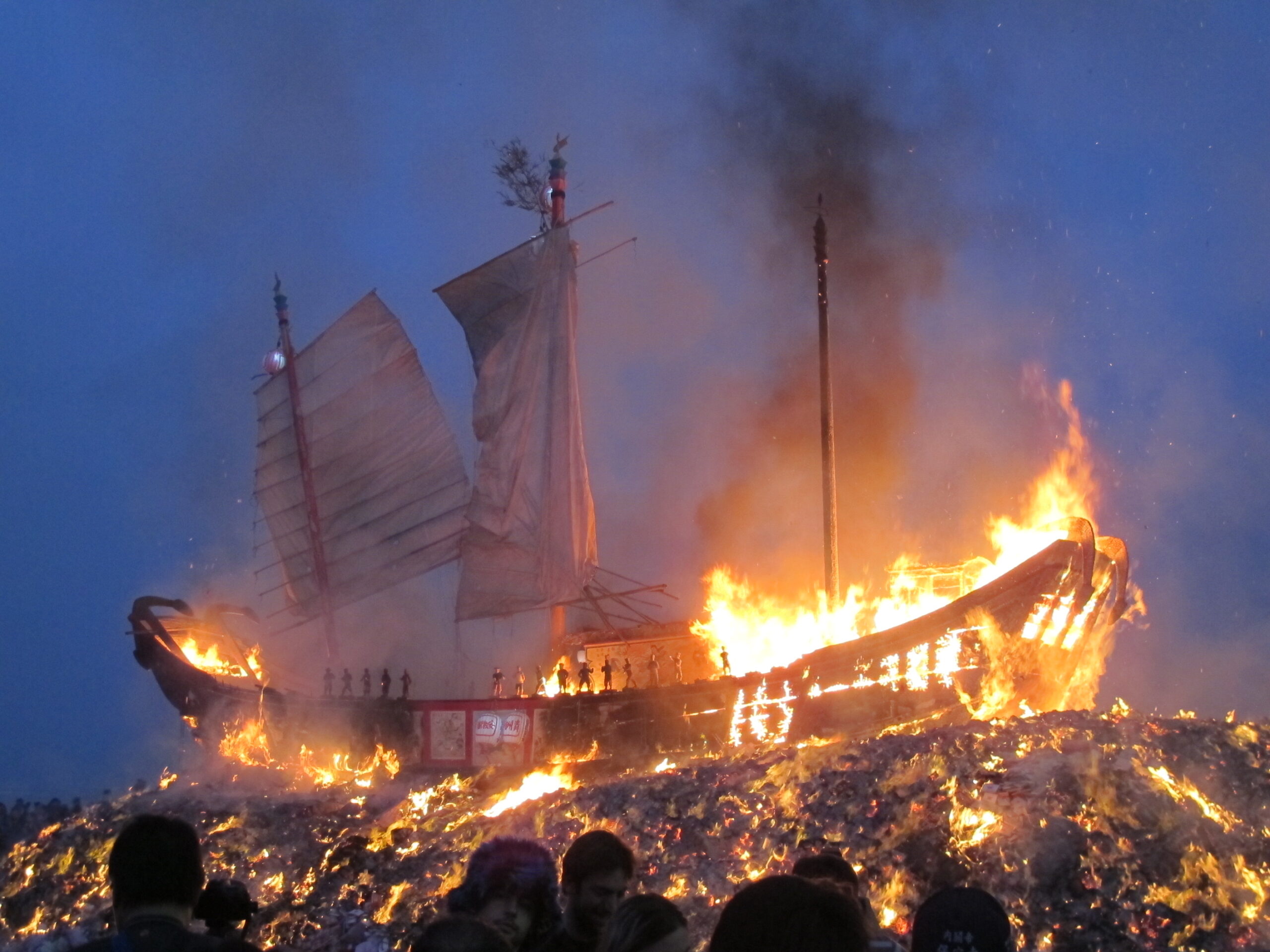
Donggang seafood vendor
Donggang: A Charming Southern Town
Donggang, often overlooked by tourists en route to Kenting National Park or Little Liuqiu, is a quaint fishing town that preserves its authentic charm. Discover its hidden gems and plan your visit, especially during the spectacular boat-burning festival in autumn 2024.
Culinary Treasures of Donggang
Donggang boasts three culinary treasures: bluefin tuna, sakura shrimp, and escolar roe. Delight in sashimi, shallow-fried shrimp on rice, and cold escolar roe for a gastronomic adventure. Explore these delicacies with a private food tour of Taiwan.
Taiwan’s Health Transformation
Taiwan, now a safe tourist destination with universal healthcare, overcame a history of health challenges. Explore how the island’s healthcare system evolved and learn about its impressive achievements, ensuring your peace of mind during your Private Taiwan tour.

Effigies of plague gods going up in flames
Plague-God Rites and Taiwan’s Boat-Burning Tradition
Taiwan’s boat-burning tradition originated from plague-god rites in southern China and was brought to the island by early migrants. Donggang hosts the most captivating event in the Chinese world, known as the King’s Ship Festival. Experience this religious and cultural spectacle during your Taiwan guided tour.

Loading the King’s Ship during the triennial festival
The King’s Ship Festival: A Spectacle of Tradition
The King’s Ship is a meticulously crafted vessel adorned with intricate paintings, embodying both beauty and tradition. Join the week-long festival with its stunning rituals, divine protections, and culminating boat-burning ceremony. Plan your visit to Donggang for 2024’s Year of the Dragon celebration with Life of Taiwan.
Loading the King’s Ship during the triennial festival
Witnessing the Boat-Burning Ceremony
Watch as the King’s Ship is prepared and loaded with traditional items to appease supernatural entities. Experience the breathtaking sight of the boat engulfed in flames on a nearby beach at dawn. Donggang’s boat-burning celebration is a mesmerising and unforgettable experience.

As dawn breaks, the boat is still aflame
Plan Your Taiwan Guided Tour
If you’re captivated by Donggang’s boat-burning festival or other Taiwanese cultural events, contact our experts today to tailor your private tour of Taiwan. We’ll craft an itinerary aligned with your interests, pacing, culinary preferences, and accommodation choices. Explore Taiwan’s rich heritage with us.
